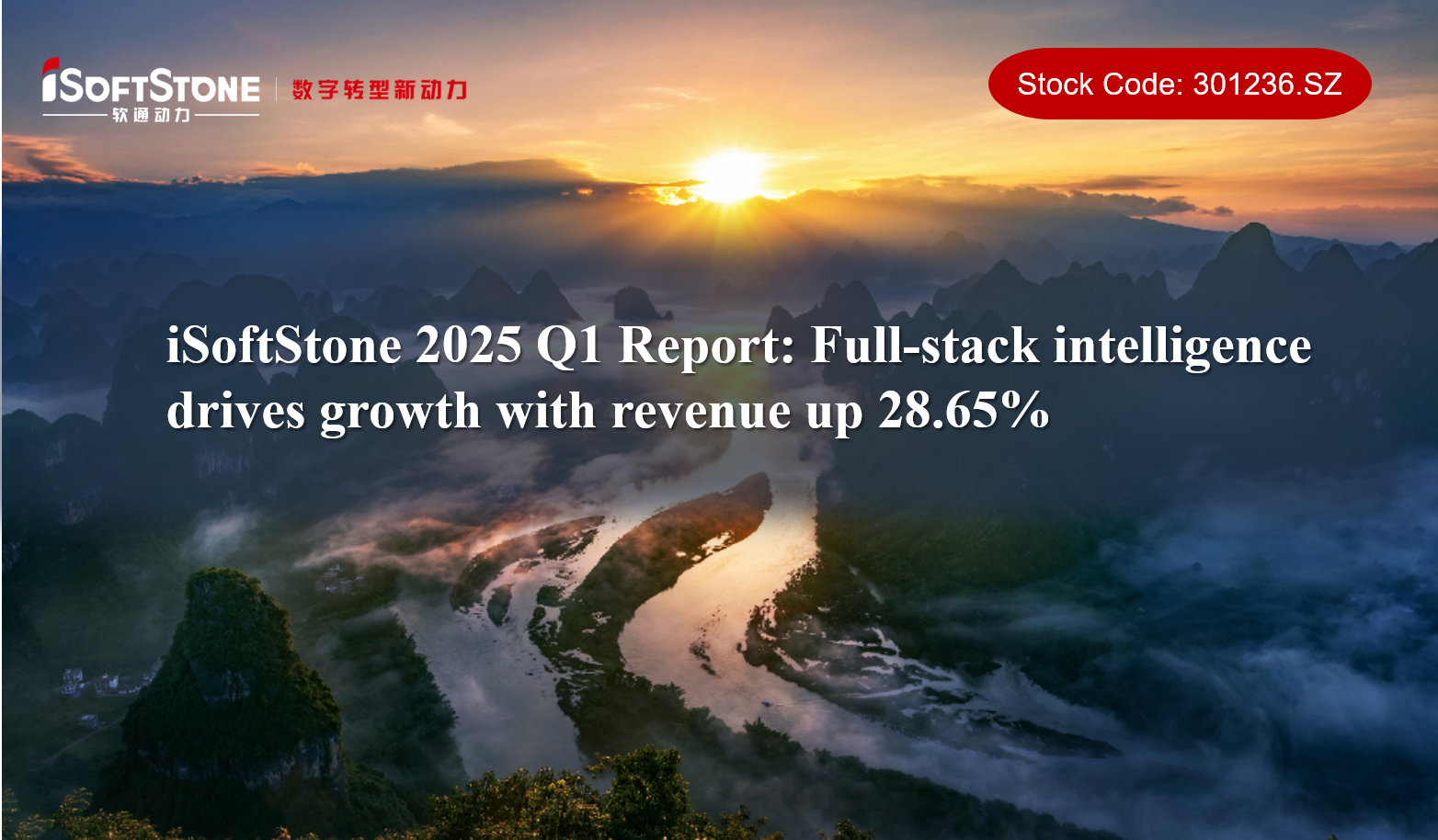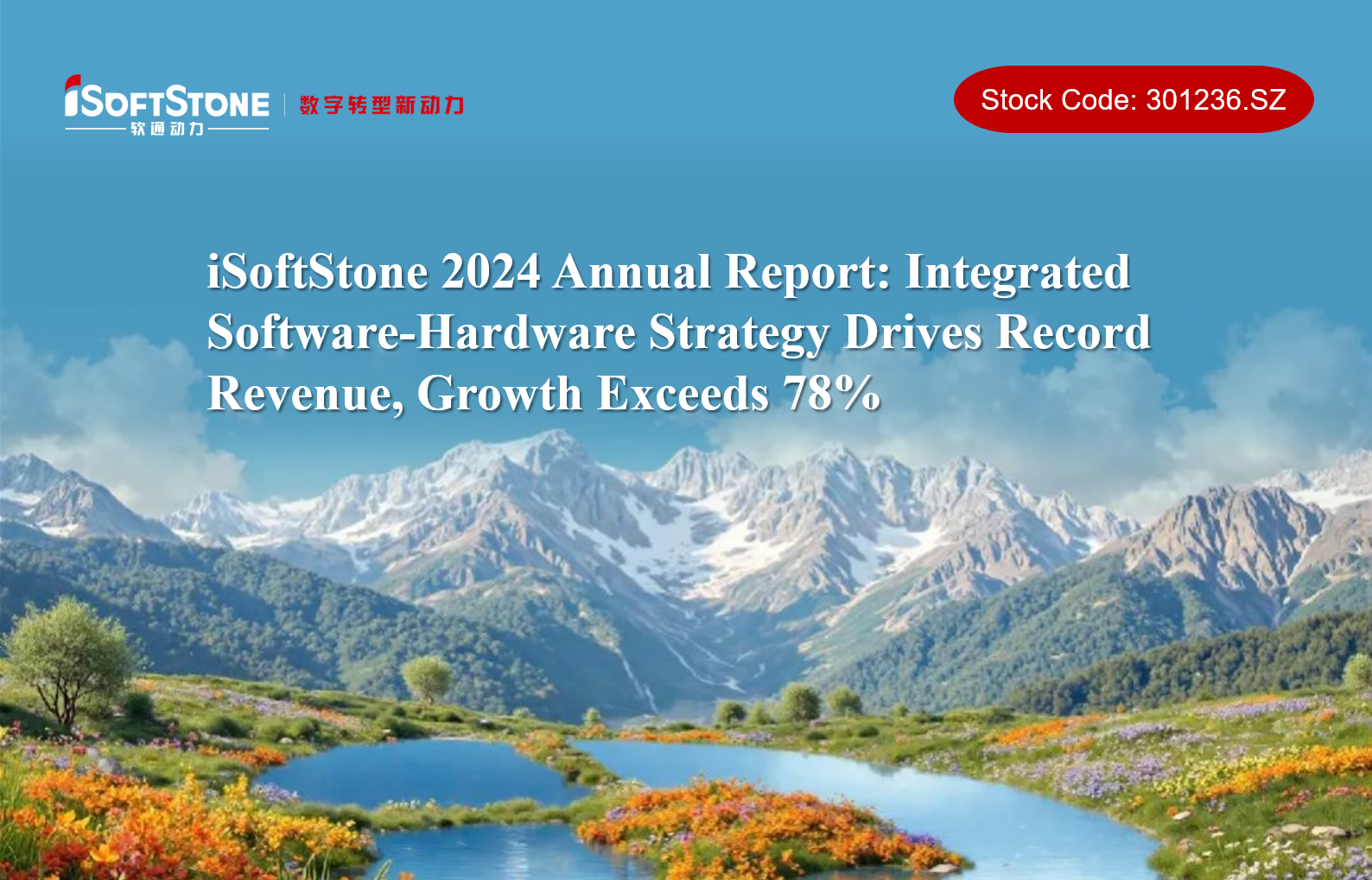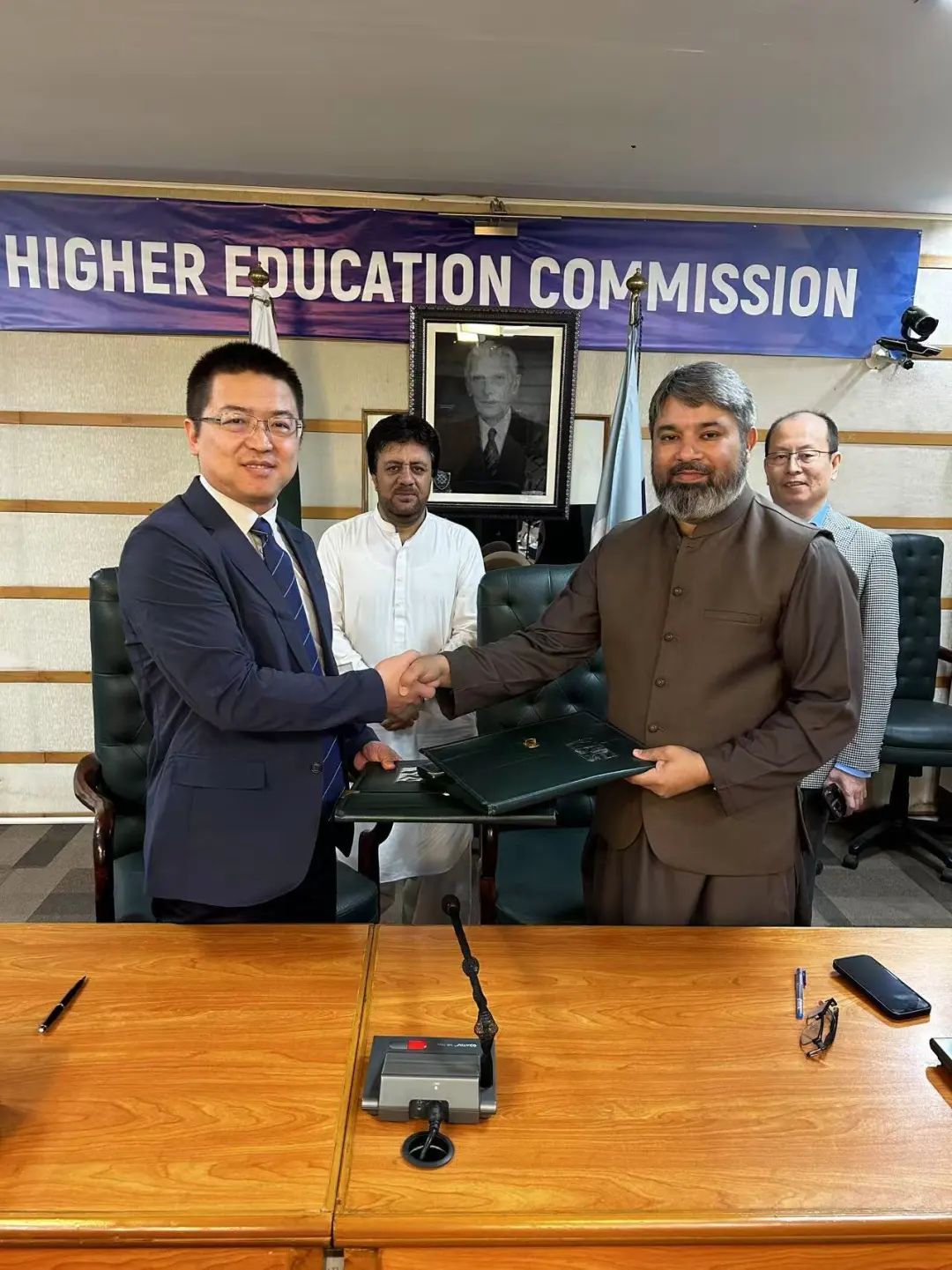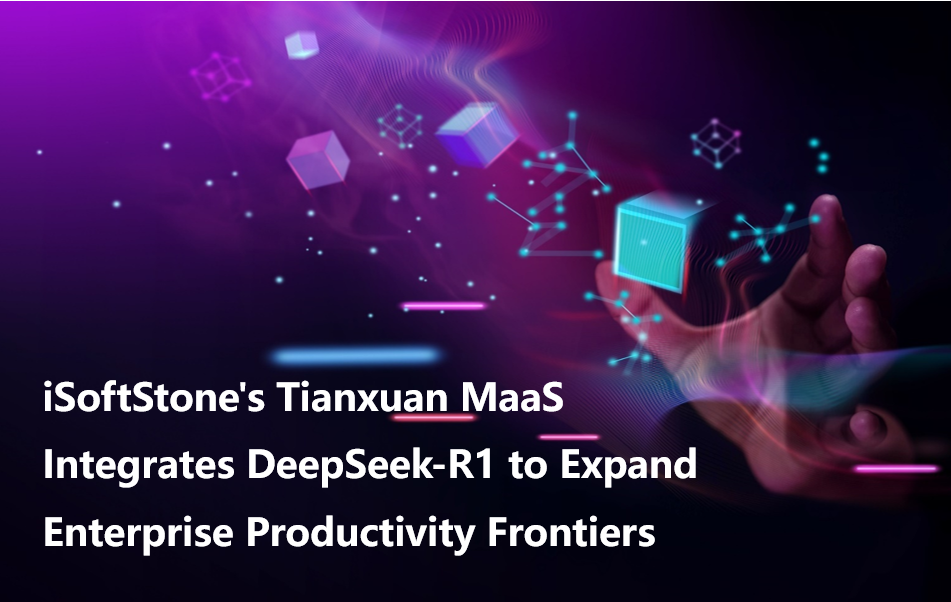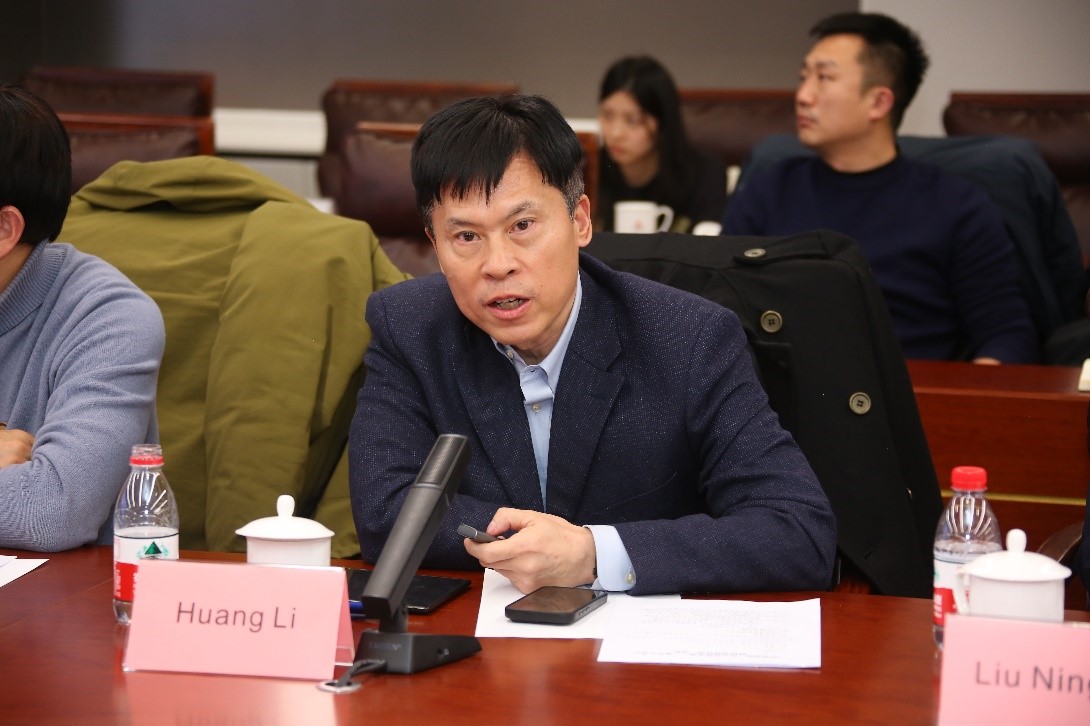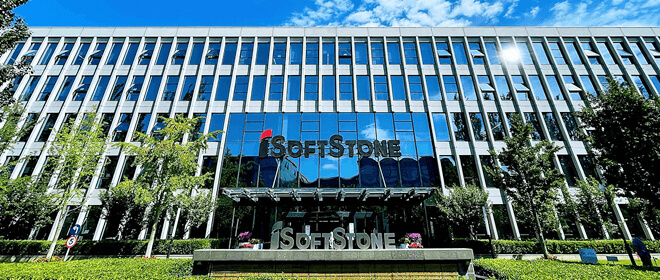
iSoftStone, Huang Ying: A New Driving Force for Digital Transformation, Open Source Innovation Empowering High-Quality Development of the Digital Economy

Open source planning is a crucial layout supporting the national "14th Five-Year Plan" and a vital lever for strengthening the foundation and soul of our country. It aims to increase awareness of Chinese developers' contributions and innovations in the field of open-source technology and help more open-source enthusiasts fully understand the practical significance of China's technological innovation and development. The OpenAtom Foundation, in collaboration with industry media such as China Electronics Newspaper, People's Posts and Telecommunications News, and China Industry News, has launched a special report on "Open Source Development and Developers". This initiative invites technical experts from key open-source projects under the foundation, academicians from prestigious institutions, leaders from relevant government departments, and executives and experts from leading technology companies to contribute signed articles, sharing insights and practical experiences regarding China's open-source technology and developers.
iSoftStone is a platinum donor to the OpenAtom Foundation, a silver donor to the OpenHarmony project group, an initiating unit of the Open Source Security Working Committee, and a member unit of the China National Information Technology Standardization Network (NITS) Operating System Working Group. Long-standing in collaboration with the OpenAtom Foundation, iSoftStone has been a steadfast advocate and practitioner of open-source principles and models. It has also emerged as a firm leader and builder in the open-source ecosystem.
Upon the invitation of the OpenAtom Foundation, Huang Ying, Director of iSoftStone and Chairman of SWANLINK, based on her reflections on iSoftStone's open-source strategy, has contributed an article to this special report— "A New Driving Force for Digital Transformation, Open Source Innovation Empowering High-Quality Development of the Digital Economy". This article was first published in the special report "Open Source Development and Developers" on December 12, 2023, in the 8th edition of the China Electronics Newspaper. Here is the excerpt of the full article:

Huang Ying, Director of iSoftStone and Chairman of SWANLINK
In recent years, the digital economy has emerged as a new engine and driving force for global economic development, with open source playing a crucial role in the rapid upgrading and convergence of digital technologies. Open-source collaboration continually leads the innovation and development of digital technology standards, persistently driving transformations in traditional industrial patterns and business models. It has gradually become a crucial "foundation" supporting the rapid development of the digital economy and its transformation into the digital era. The development of the digital economy heavily relies on innovative digital technologies, and open-source collaboration serves as a significant avenue for digital technology innovation.
Open Source as a New Driving Force for Technological Progress
As the cornerstone of software development, open source is one of the most advanced, widely adopted, and active collaborative innovation models to date. Its philosophy and mechanisms of "open collaborative innovation" have extended beyond software development into various fields. It has become a core force and an important path driving technological innovation, playing a critical role in laying the foundation for China's digital infrastructure.
In 2023, China's open source has reached a new peak of development. The number of Chinese open-source developers, projects, communities, and users continues to rise steadily. The open-source ecosystem, including foundations, intellectual property rights, business models, investment and financing, public service platforms, etc., has rapidly matured. The vitality, potential, and astonishing acceleration unleashed by China's open source have formed an undeniable force in the global open-source community.
On the technological front, Chinese enterprises' participation in open source is gradually advancing into critical areas like operating systems and databases, moving towards more foundational technologies. They are beginning to master core capabilities from underlying technologies to upper-layer applications, effectively promoting the deep integration of open source across various technological domains. On the demand side, China boasts the most comprehensive electronic industry supply chain globally, allowing many open-source technologies to find carriers in the Chinese market and be exported worldwide. In terms of talent, the number of open-source developers in China has surpassed 8 million, ranking second globally. With the proliferation of open source, more young and emerging talents are expected to join and grow within the open-source community, presenting significant potential for the expansion of open-source talent.
Open Source Is a Crucial Strategic Focus for the Development of iSoftStone
As a leading enabler for enterprise digital transformation in the industry, iSoftStone has consistently been an advocate and practitioner of open-source principles and models. The belief in open source as the future direction for digital services and the software industry is deeply ingrained. In 2019, Liu Tianwen, Chairman of iSoftStone, explicitly outlined that "open source strategy is a significant strategic focus for the development of iSoftStone". Since the establishment of the OpenAtom Foundation in 2020, iSoftStone has actively participated in and collaborated extensively with it. It stands as a platinum donor to the foundation and serves as a core co-builder for several project groups. Active involvement in projects like OpenHarmony, openEuler, openGauss, Cloud Native, and Open Source Large Models aligns with the strategic demands for the development of foundational technologies in China. iSoftStone leverages its innovation in digital technology to contribute to the open-source community actively.
To further promote the implementation and deepening of OpenHarmony in the industry on a larger scale and scope, the subsidiary company SWANLINK emerged in 2022. The significance behind the name "SWANLINK (Honghu Wanlian)" is twofold: on one hand, "Honghu" phonetically similar to "鸿鹄", an elegant water bird, symbolizes the lofty aspirations and ambitions of iSoftStone in the OpenHarmony domain. On the other hand, "湖" (Hu) in "Honghu" signifies Taihu Lake, while "Wanlian" is derived from "Internet of Everything". Both elements point to SWANLINK's headquarters located in Wuxi, renowned as the "Pearl of Taihu Lake" and the "World Internet of Things Capital". As the vanguard of iSoftStone's open-source strategy, SWANLINK focuses on the research and industrialization services of intelligent IoT operating systems. Based on the OpenHarmony framework, it has introduced the SwanLinkOS operating system under its independent brand. It has successively released multiple open-source HarmonyOS development kits such as "Yangfan", "Qihang", and "Qihong". By leveraging the potential accumulated in the commercial display sector, SWANLINK has been strategically developing solutions around four industries: mining, power, education, and transportation. Collaborating with ecosystem partners, it jointly develops OpenHarmony products and solutions, contributing to the construction of a domestically controlled and independent OpenHarmony industrial chain. Throughout its journey, SWANLNK has developed comprehensive capabilities, evolving from chip adaptation to full-stack services for industry solutions. It stands as a firm leader and builder in the OpenHarmony ecosystem.
In addition, iSoftStone has achieved remarkable results in fields such as openEuler and openGauss. As a golden donor to the openEuler project group, iSoftStone has independently developed the enterprise-level server operating system—TianHe OS, based on the openEuler framework. This operating system has enhanced features such as high performance, high operability, high compatibility, and high reliability. It is suitable for various application scenarios, including databases, big data, cloud computing, and artificial intelligence. Tianhe OS has completed compatibility adaptations for mainstream domestic servers and database/middleware vendors, contributing to low-cost, efficient digital transformations for clients across various domains. Addressing customer needs and pain points, iSoftStone has released proprietary operating system migration tools like x2TianHe and iTools, a comprehensive service toolchain. Additionally, it has introduced the "openEuler Managed by iSoftStone" service, providing comprehensive support for customers using the openEuler version. In terms of industry implementation, iSoftStone secured the contract for the China Mobile operating system migration technology service project, holding the first market share.
Focusing on three major areas: the openGauss community, the openGauss commercial distribution, and the toolchain, iSoftStone actively participates in the construction of the openGauss open-source ecosystem. It has signed the Enterprise CLA (Contributor License Agreement) with the openGauss community, currently ranking among the top contributors in the openEuler community. iSoftStone has established a Database Research Center, creating the TianHe Database based on the openGauss kernel. Plans are in place to develop custom commercial distributions of openGauss tailored for the education, healthcare, and financial industries. Additionally, iSoftStone has developed a one-stop migration service toolchain called DataSwap and TianHe Data Replication Service, providing comprehensive database solutions for clients across various industries.
High-quality Development Led by High-quality Talent
iSoftStone actively collaborates with vocational colleges and ecosystem partners to explore the "industry-academia-research-application" model. The company has established several technology research centers, including the OpenGauss & OpenEuler Research Center, Cloud Native Research Center, Artificial Intelligence Innovation and Application Research Center, and Digital Twin Research Center. These centers continuously explore emerging digital technologies. iSoftStone has also established five industry innovation centers in collaboration with leading companies in the industry. These include the iSSMeta Research Institute, the Agriculture and Food Industry Ecology Laboratory, the Space Intelligence and Dual Carbon Metaverse Research Institute, and more.
On November 10th, the Wuxi High-tech Zone Digital Talent Production-Education Alliance was established, and the iSoftStone Harmony Innovation Talent Base was inaugurated. The aim is to create a comprehensive training center that integrates talent cultivation in the Harmony innovation industry, enterprise and social nurturing, and talent services. It seeks to train and deliver talents related to the digital economy, thereby enhancing the industrial chain of the digital economy. In the future, iSoftStone will further focus on establishing a city open-source ecological chain industrial base and city open-source laboratory, creating an open-source innovation center, and establishing an open-source talent center. These efforts will contribute to talent development and prosperity in the open-source ecosystem.
In response to the Ministry of Education's call for "insisting on promoting production through education and assisting education through production, deepening the integration of production and education", iSoftStone's subsidiary, SWANLINK, in collaboration with Xi'an University of Electronic Science and Technology and Jinhua Polytechnic, jointly established the National OpenHarmony Intelligent Terminal and IoT Industry Integration Community. This initiative aims to achieve an organic connection between the education chain, talent chain, industry chain, and innovation chain. It adopts a collaborative governance model involving "university + enterprise + institute", and implements a teaching mode of "theory + practical training synchronous learning, joint cultivation by universities and enterprises, certification through competitions + research". This approach further promotes talent development in the OpenHarmony ecosystem.
Looking ahead, iSoftStone, under the guidance of the OpenAtom Foundation, will continue to adhere to the open, collaborative, and win-win open-source philosophy. It will focus on the innovation and application of the core technology in the open-source ecosystem with an international perspective, accelerate the commercialization of open-source applications, empower the open-source ecosystem, and contribute to the construction of digital China.
Paving the way for innovation with an open-source mindset. China's open-source practices are deeply engaging and integrating into the international open-source ecosystem. An increasing number of Chinese enterprises are becoming key players in the open-source ecosystem, dedicating themselves to open source and driving more market resources into open-source innovation. We have reason to believe that China will develop from an open-source major power into an open-source powerhouse.
News
